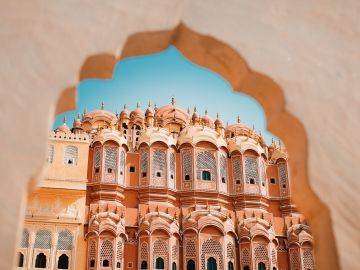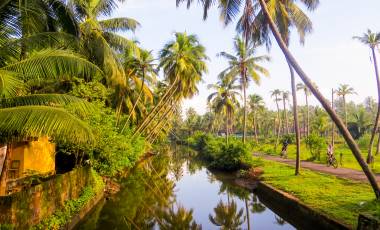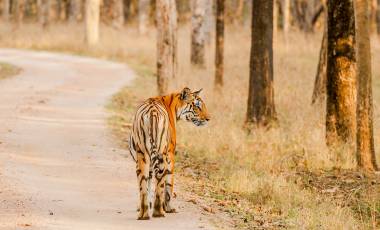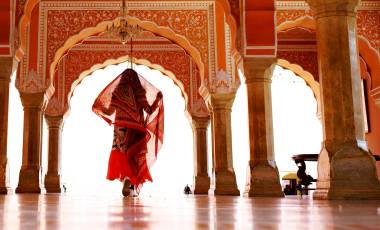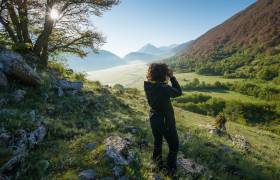From the bustling streets in the Pink City of Jaipur to the serene backwaters of Kerala, India’s varied terrain and rich heritage promise an adventure of a lifetime for every kind of traveller. On our small-guided group adventures, you’ll not only go deeper into the country’s multifaceted history and unique traditions but you’ll also benefit from a hassle-free and immersive journey led by our expert local guides who are well-versed in the intricacies of India’s culture, history, and local customs. Read on to find out five of our top once-in-a-lifetime experiences that you can have on a trip to India.
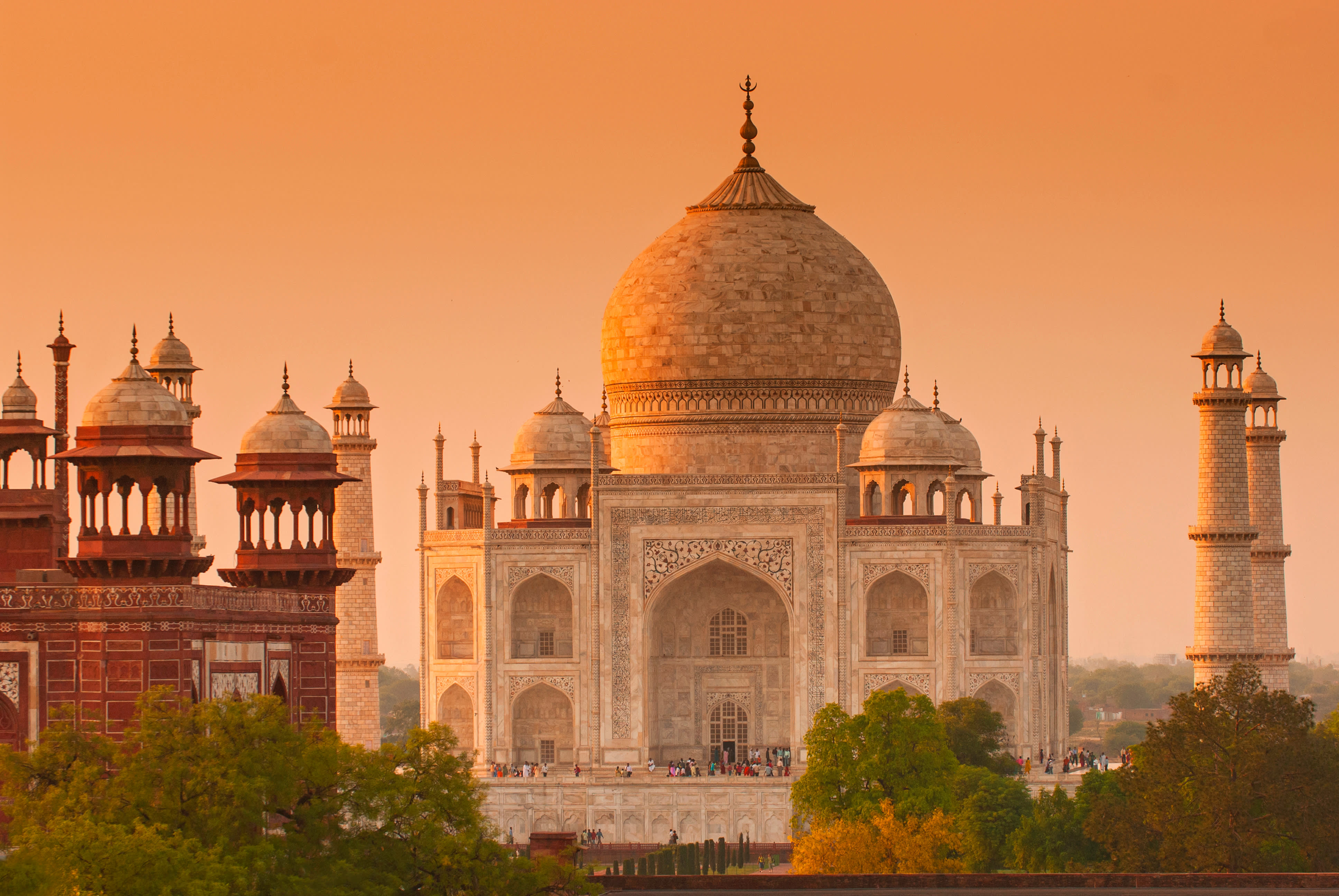
1. Beat the crowds and visit the Taj Mahal at sunrise
While it is true that the Taj Mahal can attract a significant number of visitors, especially during peak tourist seasons, experiencing it at sunrise generally offers a chance to avoid the peak crowds that tend to gather later in the day. On our Highlights of Northern India trip, we plan an early visit on day five, arriving well in advance to avoid larger crowds, for a more relaxed experience, which allows you to soak up the beauty of one of the modern-day Seven Wonders of the World. You can also visit the Taj Mahal on our action-packed trip of India’s Golden Triangle, which takes you through the iconic cities of Delhi, Agra and Jaipur.
As you wander around the spectacular grounds, you’ll learn about the history behind the Taj Mahal. Commissioned in 1632 by the Mughal Emperor Shah Jahan as a mausoleum for his beloved wife Mumtaz Mahal, the monument stands as a testament to their eternal love and devotion. The white marble structure, adorned with intricate inlay work and calligraphy, reflects a blend of Persian, Islamic, and Indian architectural styles.
Alongside its historical significance, the Taj Mahal is steeped in legends that speak of the emperor’s grief following the death of Mumtaz Mahal during childbirth, fuelling the romantic notion that the monument was born from an unparalleled love that transcended time and mortality. This narrative has enshrined the Taj Mahal as an enduring symbol of love and devotion, capturing the imaginations of visitors and storytellers from around the world.
Experiencing the ethereal beauty of the Taj Mahal at sunrise is something that will stay with you for a lifetime. As the first rays of the sun touch the pristine white marble, you’ll watch as the monument’s intricate carvings and exquisite details come to life in a soft, golden glow. The tranquil Yamuna River, which flows nearby, almost mirrors the Taj Mahal’s splendour, adding to the breathtaking spectacle.
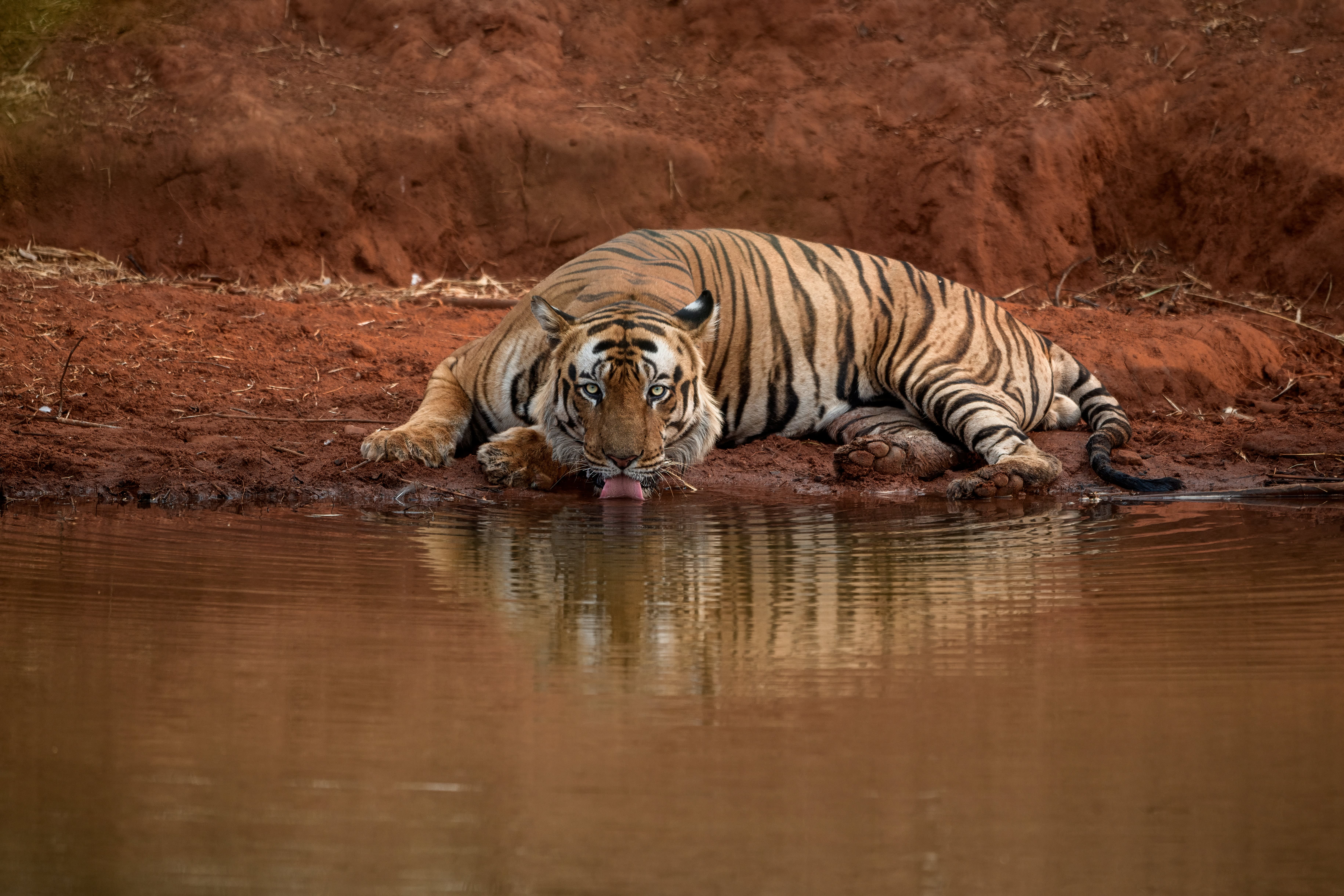
2. Spot the elusive Bengal tiger in India’s national parks
On our India Tiger Safari, you’ll enjoy 15 incredible game drives across Pench, Kanha and Bandhavgarh National Park in search of the majestic Bengal tiger. Regarded as one of India’s most iconic and revered species, the Bengal tiger is the national animal of India, representing strength, grace, and resilience while embodying a symbol of power that’s deeply ingrained in Indian mythology and folklore. They also play a crucial role in maintaining the balance of the country’s diverse ecosystems in the forests and grasslands where it resides, so it really is a once-in-a-lifetime experience to catch a glimpse of these creatures in the wild.
During this trip, you’ll be led by experienced guides and naturalists familiar with the parks. Your first stop is Pench National Park, a place so wonderful that it inspired Rudyard Kipling’s children’s classic, The Jungle Book. Depending on reports of tiger activity, you may head to the Turia zone, known for its flourishing grasslands and extensive watering holes, where tigers frequently come to quench their thirst. The Jamtara and Karmajhiri zones, characterised by their thick forest cover also offer favourable tiger spotting opportunities. Next, you’ll enjoy five game drives over three days in Kahnha, where aside from searching for Bengal tigers, you may get the chance to see leopards, sloth bears, and colourful birds including the Indian roller and the Scarlet minivet. Last but not least, is Bandhavgarh National Park. This park may be smaller, but estimates show that around 60-70 Bengal tigers live in the area, meaning this park has the highest tiger density of any reserve in India, so it’s a must-see if you’re hoping to spot this species in the wild.
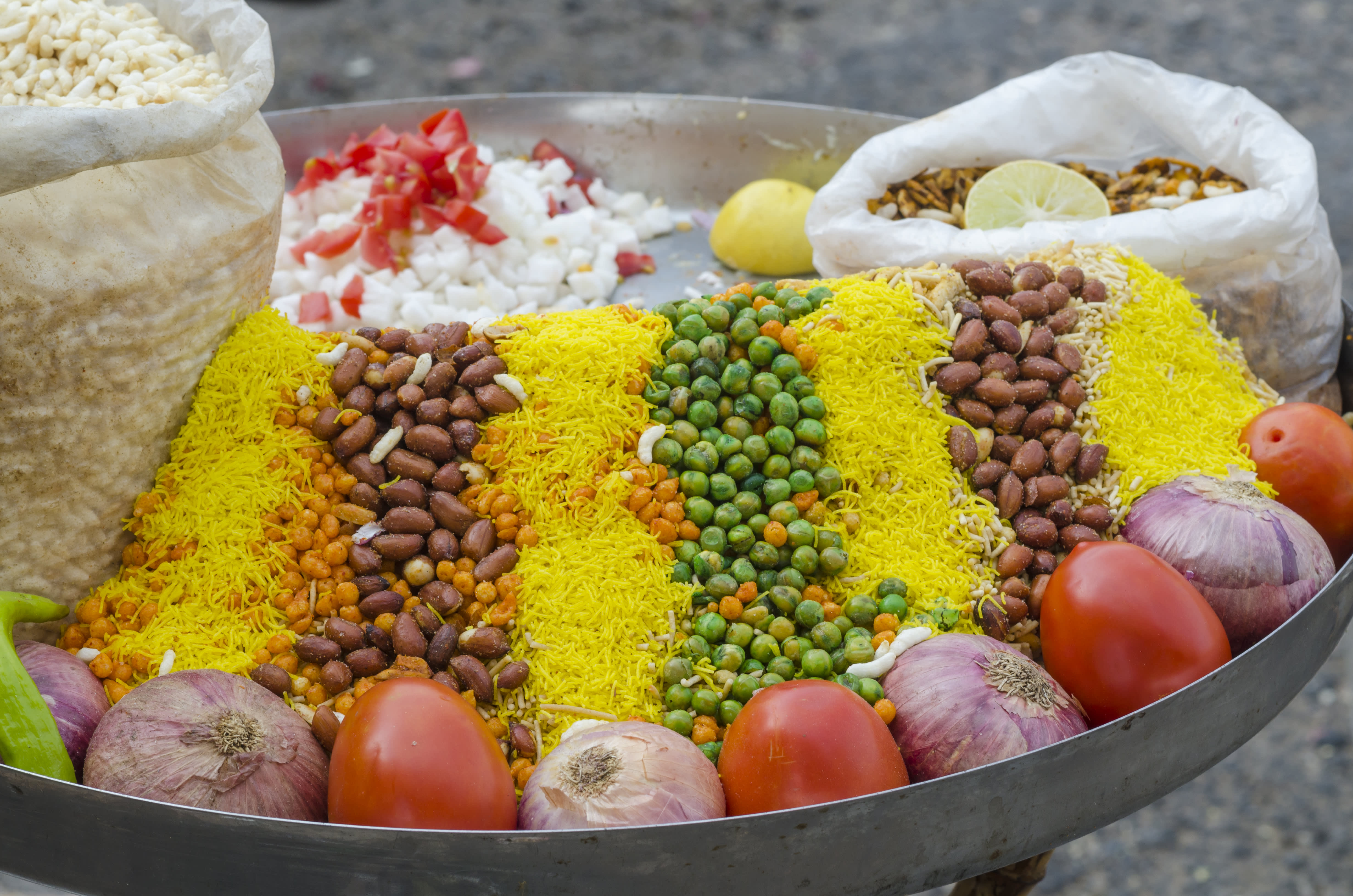
3. Enjoy a foodie and Bazar street tour in the Pink City of Jaipur
Although there are arguably many places across India where you can savour delicious Indian cuisine, the incredible amount of food stalls and local vendors, offering an array of tantalizing and authentic Rajasthani delicacies in the vibrant Pink City of Jaipur, makes this the perfect place for a foodie and bazar street tour.
On day five of our India’s North and South – Premium Adventure trip, you’ll be guided through the bustling streets to try some of Jaipur’s tantalising street food. From the iconic Pyaaz Kachori, a deep-fried pastry stuffed with a spicy onion mixture, to the delectable Samosa, a deep-fried snack filled with spiced potatoes and peas, you’ll soon see that Jaipur’s street food is a treat for all the senses. For those who love spice, Mirchi Vada, a deep-fried chilli pepper filled with a spiced potato mixture, is a common favourite of the locals.
If you’re looking to satisfy your sweet tooth, Ghewar steals the spotlight, so keep an eye out for a disc-shaped cake, with a honeycomb-like structure drenched in sugary syrup. The refreshing Kulfi Faluda, a traditional frozen dessert topped with vermicelli, rose syrup, and nuts is also an extremely popular choice. This street food tour that takes you through the colourful streets of Jaipur led by our expert local guide is a highlight for many, as it allows you to explore the rich culinary heritage of Rajasthan, where every street corner presents an opportunity to indulge in delicious local flavours.
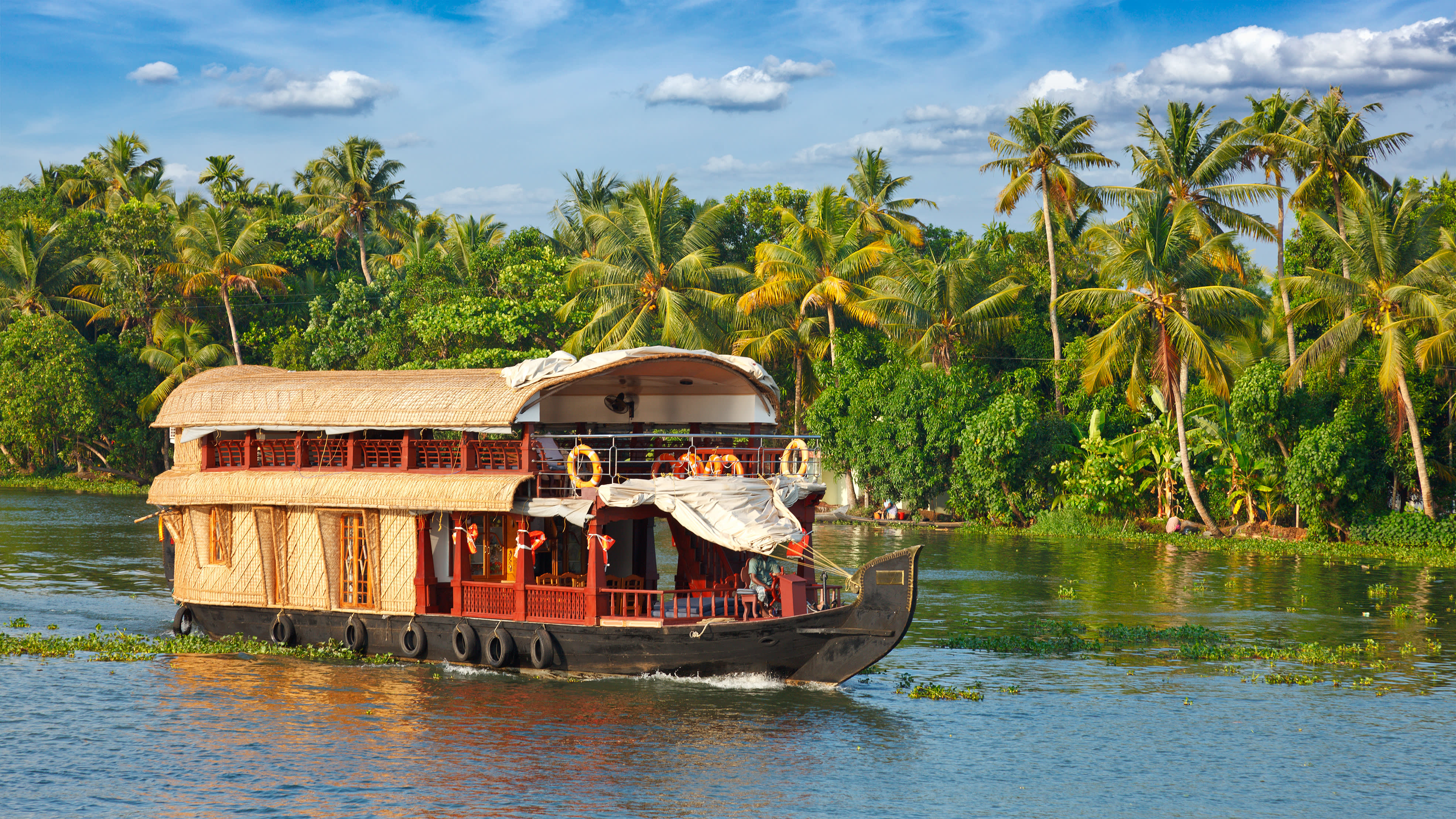
4. Cruise the Kerala backwaters on a traditional houseboat
Traditional houseboats, called “Kettuvallam”, were once used as cargo vessels for transporting rice and spices along the intricate backwaters of Kerala. Constructed using indigenous materials such as bamboo, coir, and wood, the design of the Kettuvallams exemplifies the ingenuity and craftsmanship of Kerala’s skilled artisans. However, over time, these cargo vessels evolved into contemporary houseboats which are fast becoming a popular choice for leisurely backwater cruises. Today, travellers can drift along Kerala’s enchanting network of lagoons, lakes, and canals, and gain unique insight into the gentle rhythms of local life.
On day five of our Cycle the Coast of Kerala adventure, you’ll enjoy some time off the saddle, travelling from Chennamkary, a backwater village in the Alleppey region to Trikunnapuzha, on a traditional houseboat. Gathering for sundowners and a delicious dinner of Keralan cuisine prepared by onboard chefs, you and your group can rest your legs and take in the serene views of emerald waters, vast paddy fields and coconut trees. Unsurprisingly the legacy of the Kettuvallams continues to thrive, serving as a cultural emblem that celebrates the region’s rich maritime history.
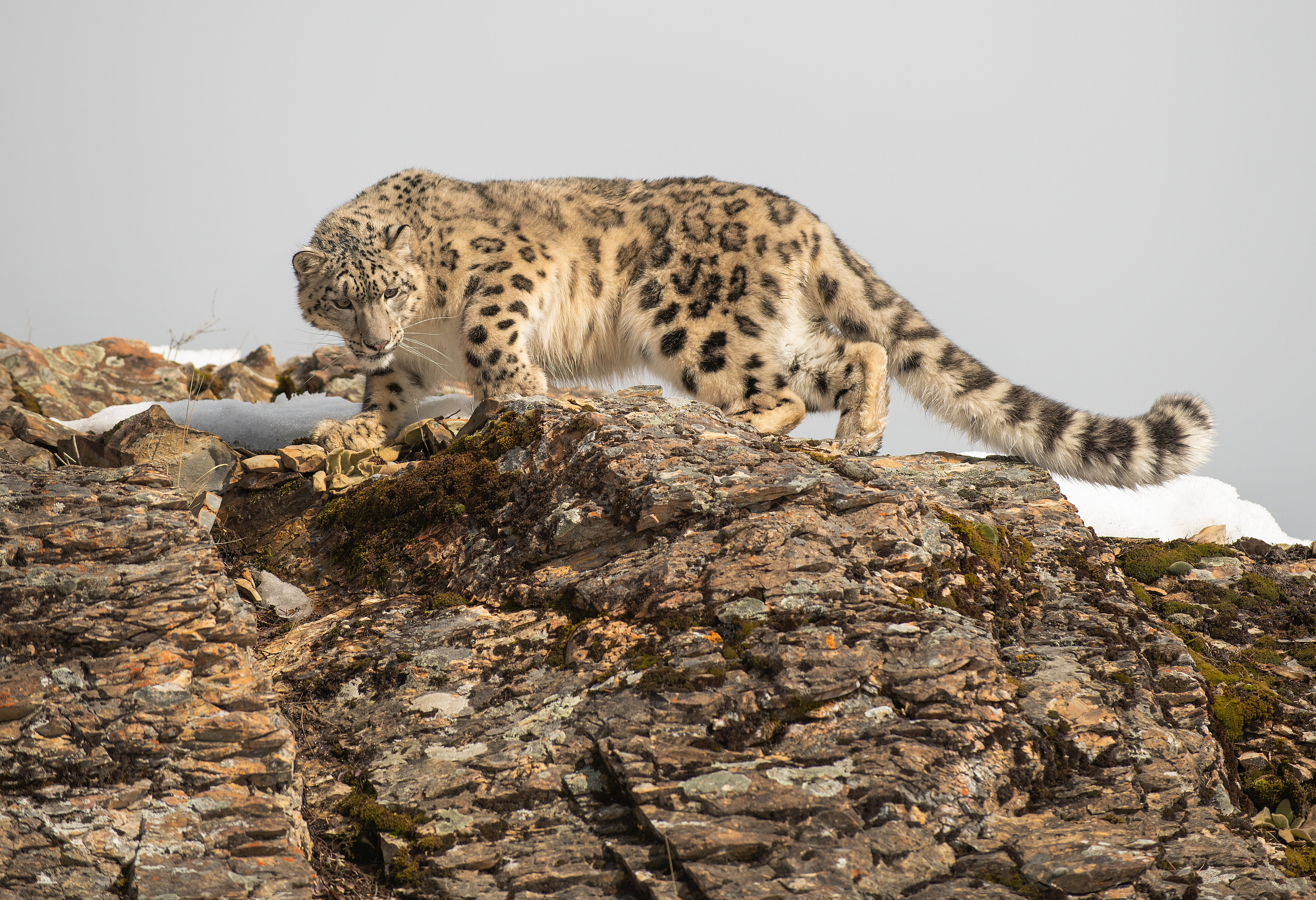
5. Track Snow leopards in the Indian Himalayas
Another experience of a lifetime you can have in India is spotting the iconic Snow leopard high in the Himalayan mountains. Recognised for their striking beauty, Snow leopards are characterised by their thick fur, patterned with rosettes and spots, allowing them to camouflage seamlessly into their snowy habitat. Their bodies have adapted to thrive in the harsh, high-altitude environments where temperatures can plummet well below freezing and with estimates claiming there are roughly between 4,000 to 6,500 snow leopards left in the wild, the Indian Himalayan region is arguably one of the most breathtaking places to encounter this elusive cat species.
So, join our veteran expert guide, Valerie Parkinson, on our Search for Snow Leopards trip, as she, alongside expert leopard trackers, leads the way from Leh to Hemis National Park. Known to the locals as “mountain ghosts”, due to their ability to move stealthily through the rugged terrain and disappear without a trace, they are particularly hard to spot. But there’s no one better than Valerie to have by your side as she is well-versed in spotting these beautiful creatures having guided in the region for over 40 years.
One of the best times to book this trip is in February. During this month, the colder temperatures force the Snow leopards to descend to lower altitudes in search of prey, like blue sheep and ibex, whose tracks are easier to find due to the heavier snowfall. Additionally, February often marks the mating season for Snow leopards, increasing the likelihood of sightings as they become more active and vocal. The spectacular snowy landscapes of the Himalayas also provide a stark contrast to the spotted fur of the snow leopards, making them easier to spot against the wintry backdrop.
It’s also a great time to soak up some local culture by attending the monastic festivals in February. An integral part of the Ladakhi calendar, local pilgrims gather in key monastery courtyards dressed in Goncha (traditional Ladakhi dress), with hand-held prayer wheels, to witness sacred dances known as Chams, where performers wear colourful robes and imposing masks that represent Dharma guardians, Buddhas and protectors, to the accompaniment of traditional instruments including drums, conch shells and local trumpets. With multiple festivals occurring throughout the month of February, it’s a fascinating time to come and witness this beautiful spectacle.
If these experiences, have inspired you to book that once-in-a-lifetime trip to India, take a look at our adventures in India here.
